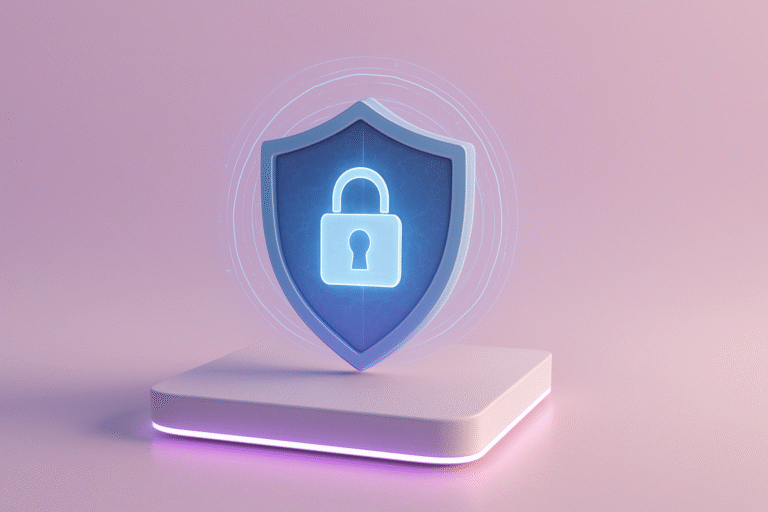With the rise of hybrid work models, where employees alternate between the office and home, the attack surface has expanded considerably. This new paradigm requires organizations to adopt more sophisticated, resilient, and dynamic cybersecurity strategies.
Today, securing the corporate network alone is no longer enough. Multiple factors must be considered, such as personal devices, home networks used by employees, or cloud services, among others. All of these elements form a scenario where the traditional organizational perimeter has vanished, along with the false sense of security provided by firewalls.
Therefore, the question is no longer whether the cybersecurity strategy should be reinforced, but rather how adaptable and autonomous your architecture is in detecting and responding to threats in real time. In today’s article, we will review the strategies you can start implementing to protect the network in hybrid environments.
Zero Trust: Protection in a perimeterless world
As we mentioned in this article, the Zero Trust philosophy, based on the principle of “never trust, always verify,” has become one of the pillars of modern cybersecurity. In a hybrid environment, where endpoints are not always under the control of the IT department, it is essential to implement:
- Mandatory multifactor authentication (MFA), even on internal networks.
- Granular authorization based on dynamic policies (ABAC or enriched RBAC).
- Integration with Identity as a Service (IDaaS) systems like Okta, Azure AD, or Auth0.
Additionally, we must ensure that every microservice or API validates the identity of the requester, even within private networks or VPNs. If an application assumes an internal request is safe just because it comes from a known IP, this could lead to issues.
What does Zero Trust mean for development?
- Do not trust internal networks: As discussed, every service must authenticate and authorize each request, even if it comes from an internal network.
- Short-lived tokens and frequent rotation: Use JWT or authentication systems with short expiration and immediate revocation.
- Context-aware access: Implement authorization decisions that take context into account, such as location, device, time, and action type.
Software Defined Perimeter (SDP): Controlling access without trusting the network
Traditional VPNs, long considered the standard for remote work, are now more of a liability than a solution. They provide broad access to an entire network based solely on user authentication.
Software Defined Perimeter completely changes this approach. Instead of assuming that a valid user should have broad access, SDP establishes encrypted and dynamic tunnels only to the specific resources for which explicit permissions exist, based on identity, context, device, and compliance status, while the rest of the infrastructure remains invisible.
This is known as network invisibility, where a resource does not even appear to exist to anyone without permission. It does not respond to pings, does not expose ports, and does not appear in DNS.
Integrated security: From code to infrastructure
In today’s context, security must be integrated into every phase of the software development lifecycle, not as an add-on, but as a design principle.
This is where the DevSecOps approach comes into play, promoting a collaborative work culture between development, operations, and security. Its purpose is to integrate security practices from the earliest stages of the software lifecycle, automating controls and validations, and treating security risks with the same priority as availability, performance, and scalability.
Therefore, adopting DevSecOps means applying security throughout all phases of development. It is not just about reviewing source code, but understanding that risks are distributed across external dependencies, containers, automated infrastructure, and continuous integration flows. Recommended tools and practices include:
- Software Composition Analysis (SCA): Nowadays, almost no application is built from scratch. Most are developed using third-party libraries, frameworks, and packages. This speeds up development but can introduce vulnerabilities if versions are not properly managed. Tools like Snyk, OWASP Dependency Check, or GitHub Dependabot can automatically analyze your dependencies and detect if you are using versions with known vulnerabilities (CVEs).
- Container scanning: Using Docker to deploy applications is common, but risky if images contain unnecessary software, open configurations, or embedded secrets. Tools like Trivy, Grype, or Dockle scan your images to detect outdated packages, security misconfigurations, or files that should not be present.
- Secure Infrastructure as Code (IaC): Automating the creation of servers, networks, or buckets with tools like Terraform or CloudFormation has been revolutionary. But this automation can also propagate critical errors. Tools like Checkov, OPA (Open Policy Agent), or Terraform Sentinel allow you to define validation policies for your infrastructure, preventing public S3 buckets or unencrypted databases before changes are applied.
- Automated security in your CI/CD pipelines: Manual checks may work in small environments, but in real-world projects with multiple daily deployments, the only effective solution is to automate security controls as a natural part of the integration and deployment cycle.
Smart Endpoint Detection and Response (EDR)
In hybrid work environments, devices are no longer protected by the corporate network, making remote workstations new points of vulnerability. Securing endpoints is more important than ever, and this is where EDR (Endpoint Detection and Response) comes in. These solutions are designed not only to block known threats but also to detect abnormal behavior, log suspicious activity, and trigger automated responses.
Unlike traditional antivirus software, an EDR system provides a much more advanced protection layer. It monitors running processes, network connections, system changes, and user activity in real time, allowing it to detect anomalous behavior before it results in an incident. It also enables the reconstruction of the full sequence of events after a breach (the so-called kill chain), which greatly facilitates forensic analysis and response.
The true value of an EDR system increases when its data is correlated with activity across other parts of the infrastructure: servers, corporate networks, and cloud services. A click on a malicious file, an unusual outbound connection, or a suspicious access to a cloud resource may seem unrelated, but together they form the trace of a coordinated attack. That’s why EDR systems must integrate with platforms like SIEM (Security Information and Event Management), which consolidate events, detect patterns, and provide a complete view of the environment.
Data Loss Prevention (DLP) and data encryption
One of the biggest challenges in hybrid environments is information control. When employees access data from different locations, devices, and networks, the risk of data leakage increases exponentially. It is no longer enough to secure the perimeter; data must be protected wherever it resides, is processed or shared.
That is why encryption and Data Loss Prevention (DLP) strategies are essential. It is not just about preventing external leaks, but also about avoiding inadvertent exposure of sensitive data through logs, removable devices, collaboration tools or simple mistakes.
The first step is to ensure that data is encrypted both in transit and at rest. This includes HTTPS connections (ideally with TLS 1.3) and encryption of disks, databases, and backups using algorithms such as AES 256, which is widely accepted as a security standard.
It is also important to review how encryption keys are managed and protected. Ideally, Key Management Services (KMS) or Hardware Security Modules (HSM) should be used, especially in critical or regulated environments.
Conclusion
In cybersecurity, there is a fundamental truth we cannot forget: what cannot be seen cannot be protected. In a hybrid environment, where the traditional perimeter has disappeared, this idea is more relevant than ever.
Throughout this article, we have explored how to address this reality across different layers: by adopting the Zero Trust model, which defaults to distrust, by dynamically segmenting access through SDP, and by integrating security throughout the software development lifecycle with DevSecOps practices.
We have also emphasized the need to protect devices by implementing intelligent EDR solutions that detect abnormal behavior and integrate with centralized analysis systems, as well as addressing the protection of the most important asset: information. Through encryption and DLP strategies, we can protect data wherever it resides, whether in transit, at rest or in use.
Ultimately, cybersecurity in hybrid environments is not a one-time measure, but an ongoing strategy that requires visibility, adaptability, and a mindset of protection by design.
As leaders in IT and tech recruitment in Spain, the UK, the USA, and Andorra, Block&Capital is dedicated to connecting top IT talent with innovative organizations. Together, we build lasting success and growth. Whether you’re a company looking for IT talent or a professional seeking new opportunities, contact us today and let’s talk.
Last posts





